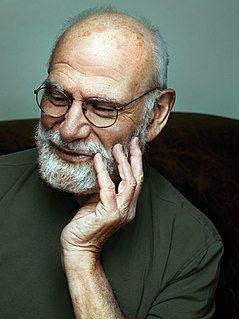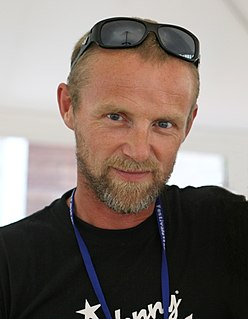A Quote by Oliver Sacks
We see with the eyes, but we see with the brain as well. And seeing with the brain is often called imagination.
Related Quotes
The brain is really hard to see. The whole thing is very large - the human brain is several pounds in weight - but the connections between brain cells, known as synapses, are really tiny. They're nanoscale in dimension. So if you want to see how the cells of the brain are connected in networks, you have to see those connections, those synapses.
We live in the Age of the Higher Brain, the cerebral cortex that has grown enormously over the last few millennia, overshadowing the ancient, instinctive lower brain. The cortex is often called the new brain, yet the old brain held sway in humans for millions of years, as it does today in most living things. The old brain can't conjure up ideas or read. But it does possess the power to feel and, above all, to be. It was the old brain that caused our forebears to sense the closeness of a mysterious presence everywhere in Nature.
To create worry humans elongate fear with anticipation and memory, expand it in imagination and fuel it with emotion. The uniquely human mental process called worrying depends upon having a brain that can reason, remember, reflect, feel, and imagine. Only humans have a brain big enough to do this simultaneously and do it well.
With any hallucinations, if you can do functional brain imagery while they're going on, you will find that the parts of the brain usually involved in seeing or hearing - in perception - have become super active by themselves. And this is an autonomous activity; this does not happen with imagination.
We are not born with effective vision. The human infant has to learn how to see. The eyes gather information, they transmit it to the brain, but the brain doesn't know how to process it yet. We learn how to see in a way that's very similar to the way we learn how to speak. It takes a couple of years.
How can you see something that isn't there?" yawned the Humbug, who wasn't fully awake yet. "Sometimes, it's much simpler than seeing things that are,"he said. "For instance, if something is there, you can only see it with your eyes open, but if it isn't there, you can see it just as well with your eyes closed. That's why imaginary things are often easier to see than real ones." "Then where is Reality?" barked Tock. "Right here,"cried Alec, waving his arms.
Because we do not understand the brain very well we are constantly tempted to use the latest technology as a model for trying to understand it. In my childhood we were always assured that the brain was a telephone switchboard...Sherrington, the great British neuroscientist, thought the brain worked like a telegraph system. Freud often compared the brain to hydraulic and electromagnetic systems. Leibniz compared it to a mill...At present, obviously, the metaphor is the digital computer.
In most sports, your brain and your body will cooperate... But in rock climbing, it is the other way around. Your brain doesn't see the point in climbing upwards. Your brain will tell you to keep as low as possible, to cling to the wall and not get any higher. You have to have your brain persuading your body to do the right movements.


































